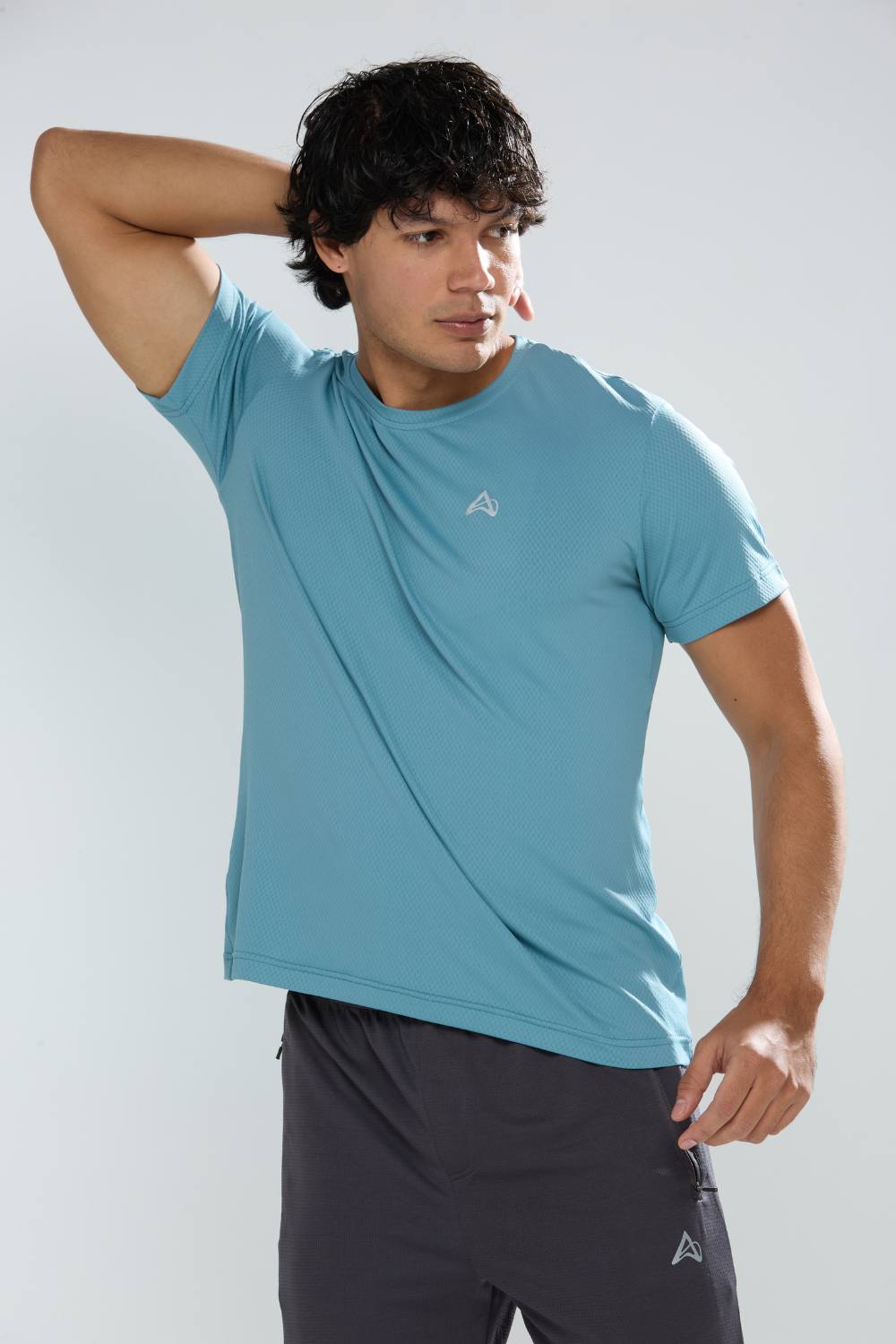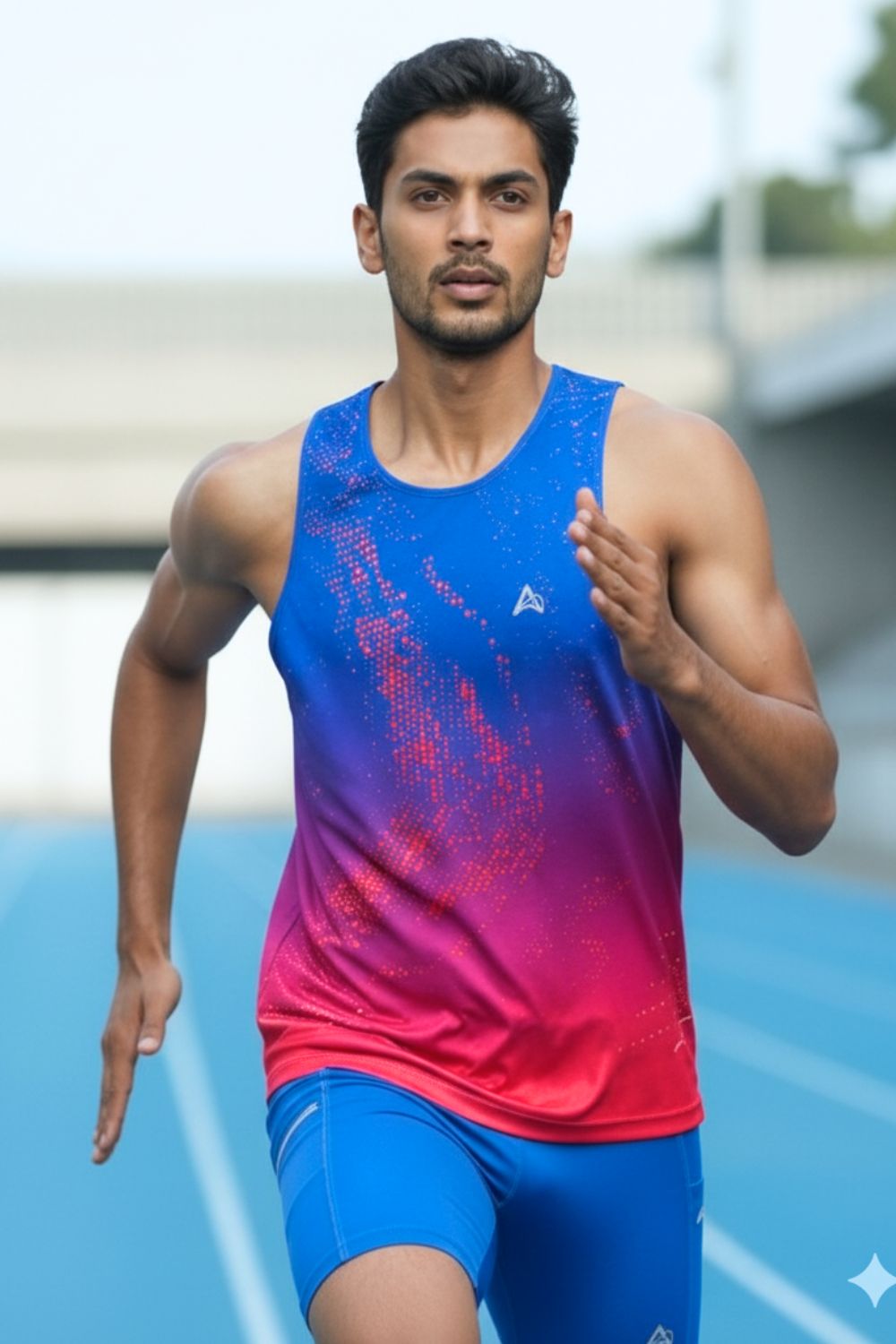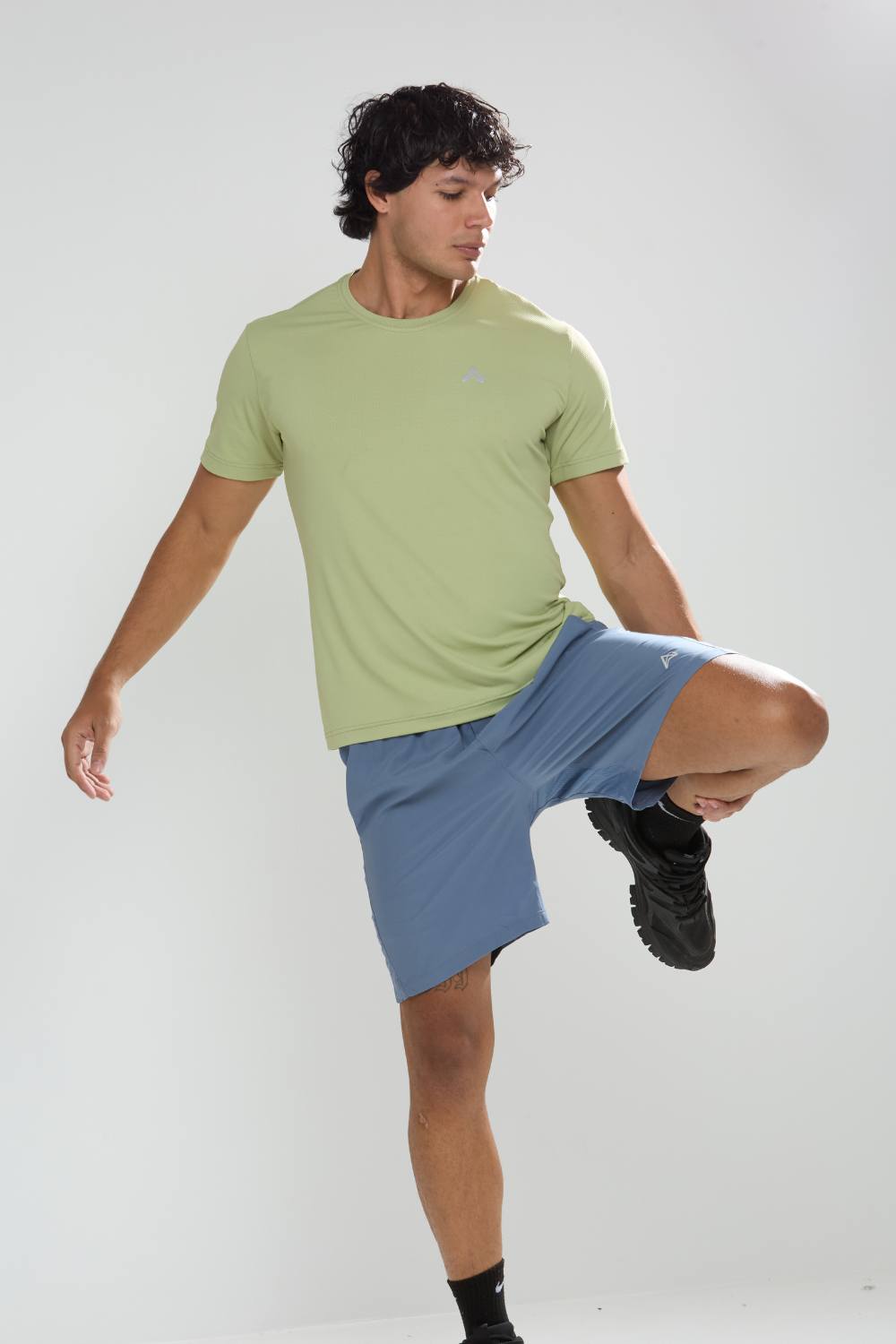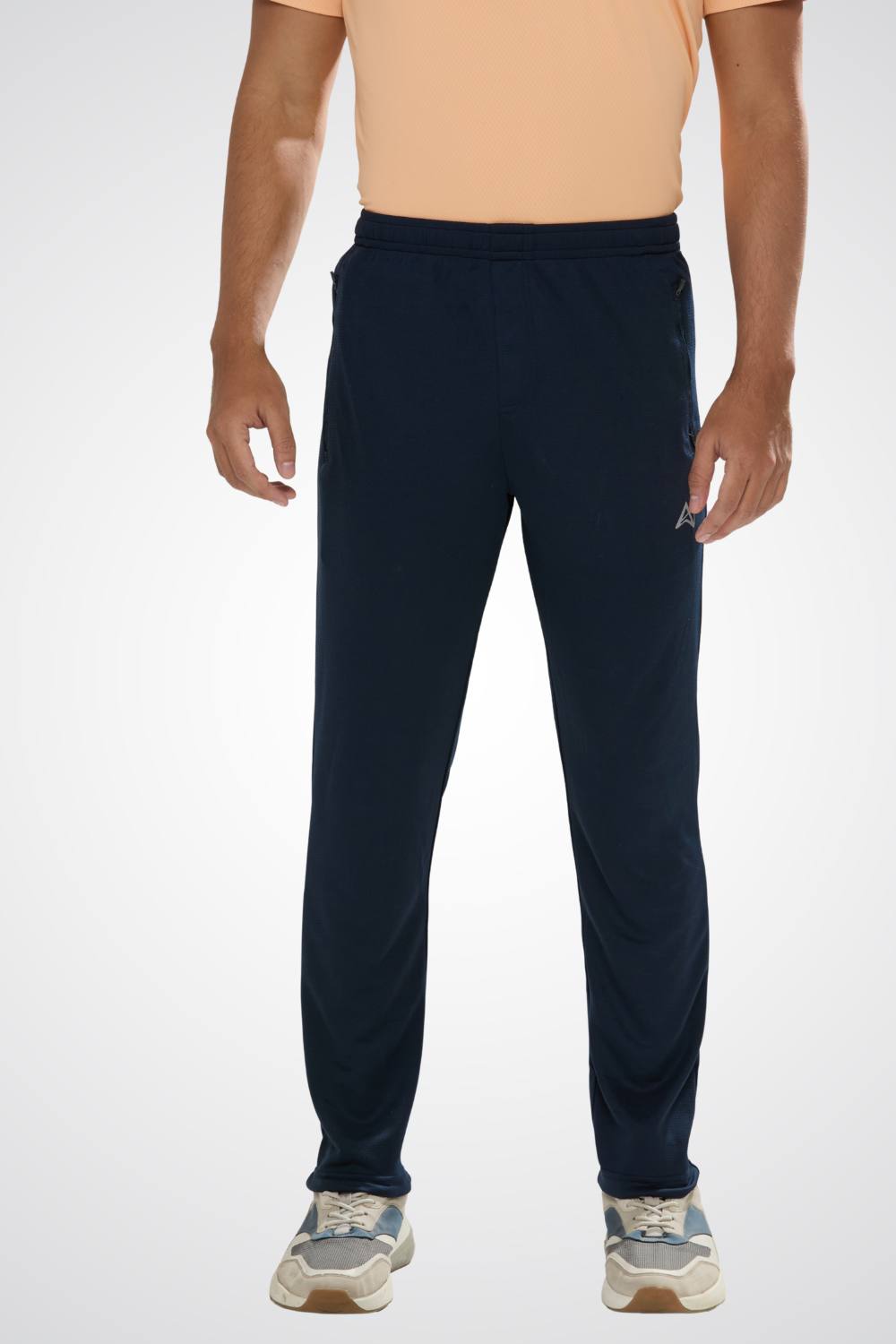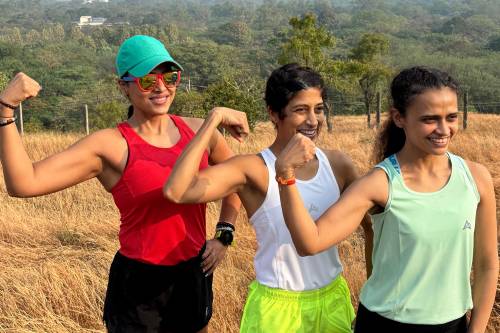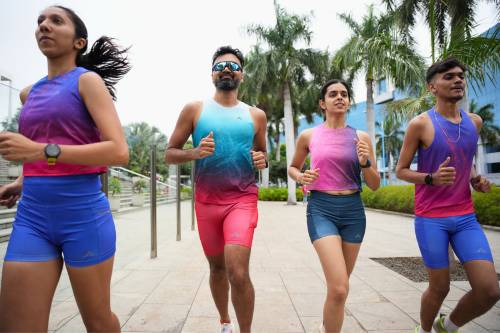Quick Listen:
As dawn breaks over Mumbai's iconic Marine Drive, the air thick with humidity, a diverse crowd of runners takes to the pavement. Some sport high-tech, moisture-wicking outfits that gleam under streetlights, while others make do with simple cotton shirts, their strides cutting through the early morning mist. Hundreds of kilometers inland, in the steep, rain-slicked paths of the Western Ghats, enthusiasts tackle uneven terrain, relying on gear that grips and protects against the elements. This scene repeats across India from the polluted avenues of Delhi to the parched trails of rural Rajasthan highlighting a fitness surge that's transforming lives and industries alike. In a nation marked by extreme contrasts in weather, topography, and income levels, running apparel isn't merely fashion; it's a vital tool for performance, adaptation, and resilience.
Tired of gear that slows you down? Chafing, soggy fabrics, and missing pockets kill your run's momentum. At Aguante, we're runners who get it. Our high-performance activewear features moisture-wicking fabrics, ergonomic designs, and smart storage to keep you focused. Shop Now!
From Urban Roads to Rural Trails: How Sports Apparel Adapts to India's Varied Running Environments
India's running gear market, which reached $2.4 billion in 2024, is on track to hit $4.8 billion by 2033, growing at a compound annual rate of 7.71% from 2025 onward. This expansion reflects a nationwide fitness awakening, driven by heightened health consciousness, increased involvement in physical activities, rapid city expansion, rising household incomes, the appeal of leisure running, the spread of community events like marathons, celebrity athlete promotions, and the boom in online shopping. Government programs, such as the Khelo Bharat Niti 2025, further bolster this trend by encouraging sports and wellness at the grassroots level. Yet, India's mosaic of environments from steamy southern coasts to dry northern expanses and lofty mountain routes requires apparel that goes beyond standard designs. Imported products from international labels often fall short, unable to cope with the country's unique demands.
For instance, a jogger in Chennai battles oppressive humidity that clings like a wet blanket, making breathable, sweat-evaporating materials essential rather than optional. Up in the Himalayas, meanwhile, adventurers demand tough, scrape-proof clothing that remains agile on boulder-strewn paths. Manufacturers face a pressing task: craft versatile gear that matches the variety of India's runners and their surroundings, incorporating innovations like lightweight cushioning and sensor-integrated wear to enhance user experience.
The Fabric of a Revolution
The evolution of India's running apparel isn't merely about expansion; it's a fundamental shift. The technical textiles sector, valued at around $22 billion in India during 2021-22, plays a pivotal role in redefining runner attire. Gone are the days of basic cotton; today's fabrics, engineered from materials like Nomex, Kevlar, Spandex, and Twaron, deliver exceptional strength, heat protection, and flexibility qualities vital for navigating India's erratic landscapes. These advanced textiles provide better heat management and endurance, ideal for the demands of diverse running conditions.
In Tirupur, the heart of India's knitwear industry, a major pivot toward synthetic fibers is unfolding. This hub, responsible for 60% of the nation's knitwear shipments and generating $4.5 billion yearly, aims to elevate its revenue to $10 billion by 2030 by ramping up manmade fibers (MMF) from 10% to 30% of production. MMF, produced via chemical methods unlike organic alternatives, are tailored for superior functionality such as rapid-drying shirts for rainy-season outings or sun-blocking arm covers for scorching Delhi days. Recent developments show factories investing in specialized equipment for MMF processing, including knitting and dyeing for polyester mixes, signaling a commitment to this transition.
The rationale? These synthetics outperform naturals in performance scenarios. In bustling Bangalore, where evening jogs are trending, illuminated elements ensure safety in busy streets. Trail enthusiasts in the Western Ghats favor feather-light jackets with sturdy stitching that repel vegetation and downpours. Adaptable clothing, like removable arm warmers or multi-layer tops, allows seamless transitions between city streets and countryside paths, catering to runners who cross varied zones in a single session.
Real Runners, Real Needs
Picture a marathon participant in Delhi enduring 104°F heatwaves: sun-shielding textiles aren't a fad but a safeguard against burns, prompting brands to offer airy long-sleeved options that deflect UV rays effectively. Conversely, Himalayan pathfinders emphasize robustness a trekker in Ladakh requires trousers and footwear that endure abrasions while allowing fluid movement. In transitional rural areas, mixed-use shoes combining urban padding with off-road traction are becoming favorites for those alternating between asphalt and soil.
Manufacturers are tuning into feedback directly from the community. Through workshops and partnerships with sports figures, firms in places like Tirupur customize products to fit regional preferences. As Sunil Jhunjhunwala, head of Techno Sportswear and CII Tirupur's vice-chair, explains, the 'China Plus One' approach is redirecting international buyers to alternatives including India, with Tirupur leading the charge and eyeing new territories in Africa and Latin America. This yields clothing that resonates personally, crafted for India's mix of vibrancy and unpredictability. Collaborations with overseas experts, such as Taiwanese specialists in processing, are elevating capabilities in activewear and technical garments.
Globally, the technical textiles arena, projected at $247.06 billion in 2025, is set to climb to $324.83 billion by 2030 at a 5.6% annual growth rate, underscoring the sector's momentum. In India, with a market hitting $29 billion in FY2024, budget allocations in 2025 are spurring further advances through duty adjustments and mission-driven support.
Challenges on the Track
Progress, however, isn't without obstacles. India's cost-conscious consumers require high-tech fabrics that don't break the bank while maintaining standards. Local procurement of niche materials poses issues, with dependencies on foreign supplies straining logistics. Crafting items that are resilient yet not bulky is a fine art excess weight fatigues athletes, while fragility leads to failures on rough ground. Education remains key; in lesser urban centers, many stick to plain tees, oblivious to specialized options suited to their locales.
Imported goods carry risks too, often engineered for milder weather and ill-equipped for India's harshness a European-style coat might disintegrate in Kerala's torrents. Domestic players hold an edge here, honing in on local weather patterns like moist shores, arid wastelands, or frosty peaks to foster lasting allegiance. Recent global shifts, including U.S. tariffs up to 25%, have disrupted Tirupur's exports, halting new contracts and forcing deal revisions, adding pressure amid high worker turnover and infrastructure gaps.
Government aids, like subsidies for R&D in synthetics and the Tamil Nadu Tech Textile Mission, offer relief by funding innovation and unit setups. Still, accelerating an integrated MMF supply chain encompassing yarns like polyester and petrochemical bases is crucial, aiming to match established leaders in years rather than decades through tech upgrades and training.
Opportunities in Every Stride
India's vast geography mirrors its potential. The affordable activewear category is thriving, appealing to hobbyist runners in towns like Jaipur or Coimbatore. Digital sales and brand-direct models are democratizing access to specialized items outside major hubs, boosting transactions in all regions: North, South, East, and West. Green initiatives shine bright, with recycled synthetics appealing to eco-aware trail users who prioritize planetary health.
Technology fusion is accelerating fabrics with built-in monitors or connected trackers align with market segments like wearables. Tirupur's goal of doubling output signals optimism, especially as worldwide technical textiles demand surges. India's exports in this niche jumped 28.4% to $2.85 billion in 2022, with ongoing rises. Homegrown labels are leading, merging creativity with cost-effectiveness.
Under the National Technical Textiles Mission, R&D focuses on specialty fibers like aramids and carbon, aiming for $40-50 billion domestically in the coming years, far outpacing current 5-10% penetration against global 30-70%. With ambitions to hit $100 billion in exports by 2030, the sector's trajectory is upward.
A Finish Line Worth Chasing
Running in India transcends fad status it's a cultural shift. From Mumbai's damp boardwalks to Meghalaya's foggy routes, participants are pushing boundaries. Backed by a burgeoning $2.4 billion market and innovative textiles, the apparel field is meeting the moment. Companies attuned to the spectrum of runners city dwellers, villagers, pros, or novices will forge not just sales but enduring bonds. With events proliferating and paths calling, tomorrow's running wear promises resilience and inclusivity matching its users. In this populous narrative tapestry, each footfall weaves a fresh chapter.
Frequently Asked Questions
What makes running apparel in India different from international brands?
Running apparel in India must adapt to extreme contrasts in weather, topography, and income levels that international brands often can't address. While imported products are designed for milder climates, Indian runners face unique challenges like Chennai's oppressive humidity, Delhi's 104°F heatwaves, and the Western Ghat's rain-slicked terrain. Domestic manufacturers are developing specialized gear using advanced technical textiles like moisture-wicking synthetics and UV-protective fabrics that can handle India's harsh and varied conditions better than standard international designs.
How big is India's running gear market and what's driving its growth?
India's running gear market reached $2.4 billion in 2024 and is projected to hit $4.8 billion by 2033, growing at 7.71% annually. This growth is fueled by increased health consciousness, rapid urbanization, rising household incomes, the popularity of marathons and community running events, and government initiatives like Khelo Bharat Niti 2025. The expansion also reflects a nationwide fitness awakening, with more people participating in recreational running across diverse environments from urban roads to mountain trails.
What role do technical textiles play in India's running apparel revolution?
Technical textiles, valued at $22 billion in India during 2021-22, are revolutionizing running apparel by replacing basic cotton with advanced synthetic materials like Nomex, Kevlar, and Spandex. These engineered fabrics provide superior strength, heat protection, and flexibility essential for India's erratic landscapes. Manufacturing hubs like Tirupur are pivoting toward man-made fibers (MMF), aiming to increase their use from 10% to 30% of production, creating specialized gear like rapid-drying shirts for monsoon running and sun-blocking arm covers for extreme heat conditions.
Disclaimer: The above helpful resources content contains personal opinions and experiences. The information provided is for general knowledge and does not constitute professional advice.
You may also be interested in: How Indian Runners Build Endurance With Proper Gear
Tired of gear that slows you down? Chafing, soggy fabrics, and missing pockets kill your run's momentum. At Aguante, we're runners who get it. Our high-performance activewear features moisture-wicking fabrics, ergonomic designs, and smart storage to keep you focused. Shop Now!
Powered by flareAI.co





